This Vegan Bibimbap is a plant-based and gluten-free take on the classic Korean dish. It’s easy to make with seasoned veggies, crispy tofu served over cauliflower rice with a sweet and spicy gochujang sauce. Gluten-free, dairy-free, grain-free and refined sugar-free.
PIN HERE for later and follow me on Pinterest for more recipe ideas
What is Bibimbap
Bibimbap is one of the first Korean dishes I ever tried and this is my plant-based and gluten-free take on this popular favorite. The word “bimbim” means mixed and “bap” means rice which translates into mixed rice. Bibimbap is traditionally served in a hot stone bowl (dolsap) with sizzling crispy rice topped with a variety of seasoned vegetables, protein such as meat or tofu topped with a fried egg.
Recipe Ingredients
- Organic Extra-Firm Tofu: Pressed, drained and cut into cubes.
- Toasted Sesame Oil: For that classic nutty flavor.
- Garlic: Finely minced or grated.
- Coconut Aminos: Sub with gluten-free Tamari or low sodium soy sauce if not gluten-free.
- Carrots: Finely shredded or sliced into thin matchsticks.
- Spinach: 4 large handfuls.
- Cauliflower Rice: Cooked. You can also sub with Jasmine rice or your favorite rice if not grain-free.
- Edamame beans: 1/3 cup of frozen and thawed shelled edamame beans.
- English Cucumber: Or Persian cucumbers, cut into half-circle slices.
- Sesame Seeds
Gochujang Sauce
- Gochujang
- Maple syrup
- Toasted sesame oil
- Water
- Coconut Aminos: sub with gluten-free Tamari or low sodium soy sauce if not gluten-free.
- Coconut vinegar: rice vinegar works too.
How to make Vegan Bibimbap
- Prepare the tofu: Cut tofu into 1-inch cubes. Heat sesame oil in a large non-stick pan on medium heat. Add the tofu and fry until golden, about 3 minutes per side. Add the crushed garlic and coconut aminos and cook for another minute. Transfer to a plate and set aside.

- Cook the carrots: In the same pan, add a little bit more oil as needed. Add the carrots and sauté for a few minutes until cooked. Set aside.
- Cook the remaining vegetables: Wilt the spinach, steam or fry the cauliflower rice and boil the edamame beans.
- Prepare the cucumber: Cut cucumber into semi circles and add the sesame seeds. Toss until combined.
- Make the sauce: Mix all the sauce ingredients in a bowl.

- Assemble the bowls: Divide the cauliflower rice into two bowls, then add each of the ingredients side-by side into the bowl starting with the carrots, spinach, cucumber and edamame beans. Drizzle the bibimbap sauce over the vegetables.

- Serve: When ready to serve, use your chopsticks and spoon to toss all the ingredients with sauce before eating!

Tips for Success
Don’t forget to check out the following tips and tricks before you start working on these veggie bowls.
- Press and Drain the Tofu Well: Removing as much moisture as possible from your tofu will ensure that it cooks up nice and crispy. Refer to my Tofu Cooking Tutorial for detailed instructions on how to do so as well as additional tips.
- Only Add Water to the Sauce as Needed: If the almond butter or tahini you used was fresh from the top of the jar, you may not have to add any water to your dressing. If the nut (or seed) butter wasn’t as drippy, mix in a small amount of water at a time until your dressing has a creamy, sauce-like consistency.
- Don’t Drizzle on All the Sauce at Once: We recommend adding a light drizzle of sauce to your bibimbap bowls and then drizzling on more as you go. This prevents the bowls from becoming soggy, which is helpful if you end up having leftovers.
Add-Ins & Variations
Feel free to load up these power bowls with whatever ingredients you’re craving. They couldn’t be more versatile!
- Add Beansprouts
- Add Zucchini
- Sub the Cauliflower Rice for Riced Broccoli, Riced Palmini or preferred rice
- Add Toasted Seaweed Strips
- Use Another Protein That Works with Your Diet
Storage Instructions
It’s no secret that these bowls are perfect for meal prep. We like to store the veggies, rice, tofu and dressing separately if we’ve made them in advance.
If you’re storing leftovers, just be sure to keep the veggie bibimbap bowls separate from the sauce. Place them in their own airtight containers and refrigerate them. The bowls will last for 3-4 days and the sauce will last for up to 1 week.
If you’d like to warm up the tofu, remove each piece from the bowl and reheat it in a 375°F oven or Air Fryer until it’s very hot throughout. The cauliflower rice can be warmed up over a low-heat burner on the stove. Add a splash of water or oil to re-hydrate it and stir frequently.
Can you freeze Bibimbap?
Certain components of these vegetarian bibimbap bowls can be frozen. Namely, the rice, the tofu and the veggies.
- To Freeze the Cauliflower Rice: Place the cooled rice into a heavy-duty storage bag and freeze it for up to 6 months. Thaw it out in the fridge before reheating it. You can also freeze it before it’s cooked if you’re meal prepping.
- To Freeze the Tofu: Keep in mind that your tofu may develop a slightly spongy texture after being frozen and thawed. If you’d still like to freeze it, place the cooled tofu into a freezer-safe container and store it for up to 2 months, thawing it out in the fridge before reheating it.
- To Freeze the Veggies: Place the prepared veggies into a freezer-safe container and store them for up to 8 months. Thaw them out in the fridge before using them.
More Korean-inspired dishes:
Korean Pork Bone Soup Gam ja tang
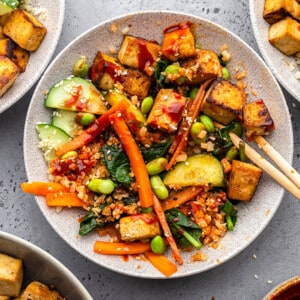
This Vegan Bibimbap is a plant-based and gluten-free take on the classic Korean dish. It's easy to make with seasoned veggies, crispy tofu served over cauliflower rice with a sweet and spicy gochujang sauce. Gluten-free, dairy-free, grain-free and refined sugar-free.
- 1 lb organic extra-firm tofu
- 1 tsp sesame oil
- 2 garlic cloves , finely minced or grated
- 1.5 tbsp coconut aminos , or sub with gluten-free Tamari or low-sodium soy sauce if not gluten-free
- 2 carrots , cut into matchsticks or julienned
- 4 large handfuls spinach , wilted
- 2 cups riced cauliflower , cooked
- ⅕ cups frozen and thawed shelled edamame beans
- ½ cucumber
- 1 tsp sesame seeds
- 2 tbsp Gochujang
- 1.5 tbsp maple syrup or sub preferred sticky liquid sweetener such as sugar-free maple syrup or yacon syrup for lower sugar option
- 1 tbsp toasted sesame oil
- 1 tbsp water
- 1 tsp coconut aminos , or sub with gluten-free Tamari or low-sodium soy sauce if not gluten-free
- 1 tsp coconut vinegar , or rice vinegar
Prepare the tofu: Cut tofu into 1-inch cubes. Heat sesame oil in a large non-stick pan on medium heat. Add the tofu and fry until golden, about 3 minutes per side. Add the crushed garlic and coconut aminos and cook for another minute. Transfer to a plate and set aside.
Cook the carrots: In the same pan, add a little bit more oil as needed. Add the carrots and sauté for a few minutes until cooked. Set aside.

Cook the remaining vegetables: Wilt the spinach, steam or fry the cauliflower rice and boil the edamame beans.
Prepare the cucumber: Cut cucumber into semi circles and add the sesame seeds. Toss until combined.

Make the sauce: Mix all the sauce ingredients in a bowl.Assemble the bowls: Divide the cauliflower rice into bowls, then add each of the ingredients side-by side into the bowl starting with the carrots, spinach, cucumber and edamame beans. Drizzle the bibimbap sauce over the vegetables.

Assemble the bowls: Divide the cauliflower rice into 2 bowls, then add each of the ingredients side-by side into the bowl starting with the carrots, spinach, cucumber and edamame beans. Drizzle the bibimbap sauce over the vegetables.

Serve: When ready to serve, use your chopsticks and spoon to toss all the ingredients with sauce before eating!

To Store
- Meal Prep: Store veggies, rice, tofu & sauce separately if prepping bowls in advance.
- Leftovers: If storing leftovers, keep bowls separate from sauce. Place them in their own airtight containers and refrigerate. Bowls will last for 3-4 days and sauce will last for up to 1 week.
To Reheat
- Tofu: Remove tofu from bowls and reheat in a 375°F oven or Air Fryer until very hot throughout.
- Cauliflower Rice: Warm rice over low heat, adding a splash of water or oil and stirring frequently.
To Freeze
- Rice: Place cooled rice into a heavy-duty storage bag and freeze for up to 6 months. Thaw in the fridge before reheating. You can also freeze it before it's cooked if meal prepping.
- Tofu: Keep in mind that frozen & thawed tofu may develop a slightly spongy texture. If you'd still like to freeze it, place cooled tofu into a freezer-safe container and store for up to 2 months, thawing in the fridge before reheating.
- Veggies: Place prepared veggies into a freezer-safe container and store for up to 8 months. Thaw in the fridge before using.

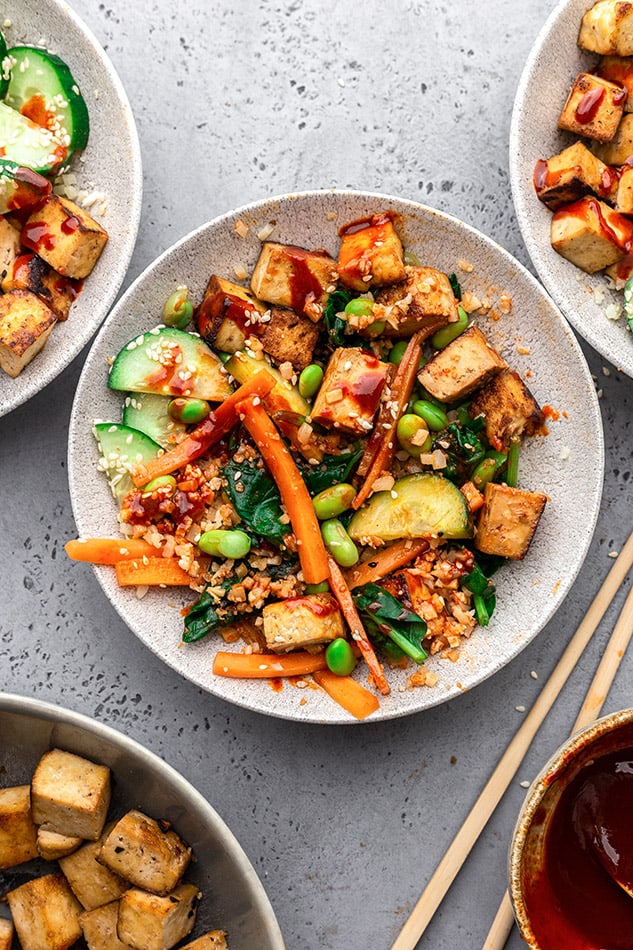

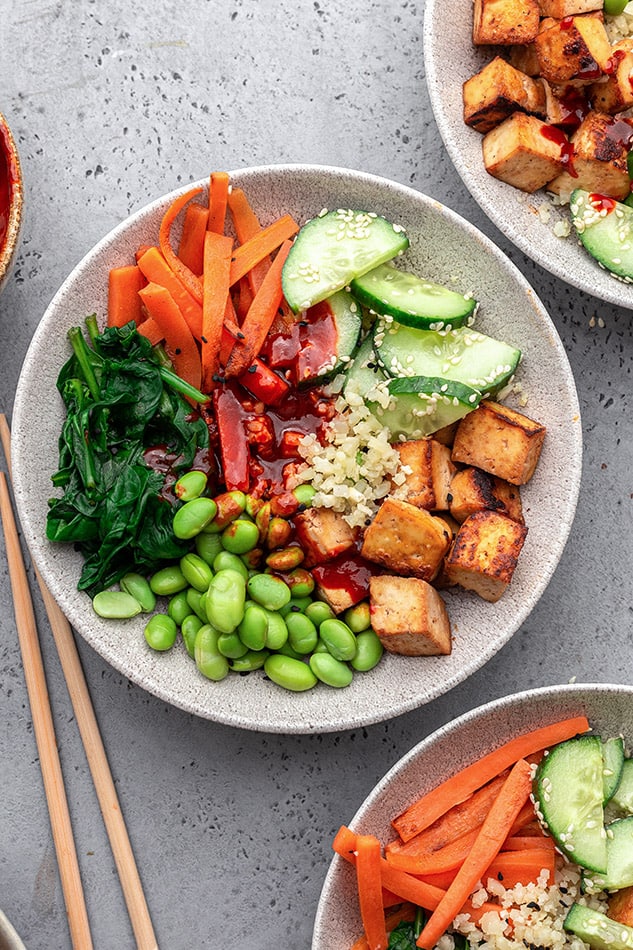
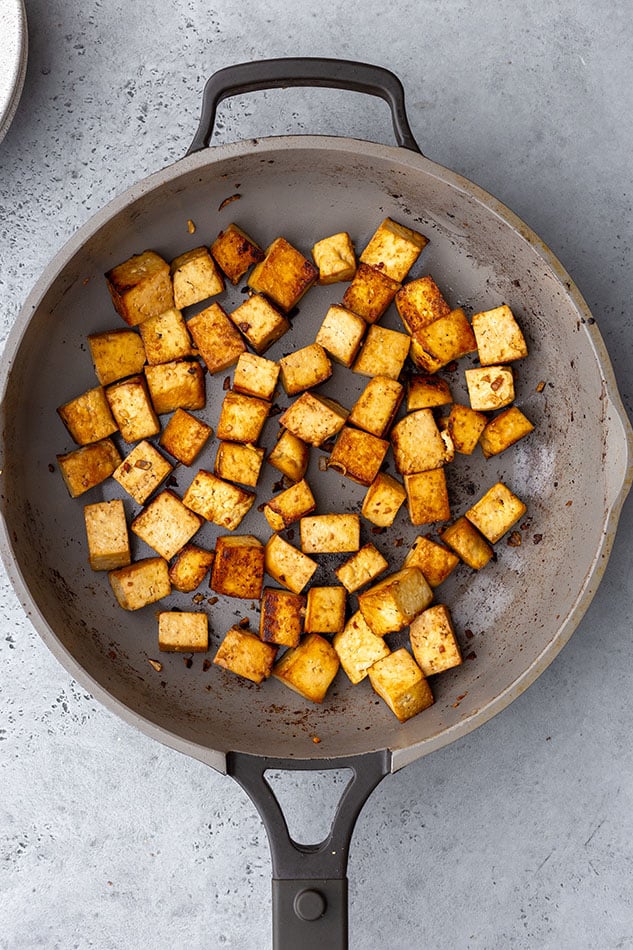
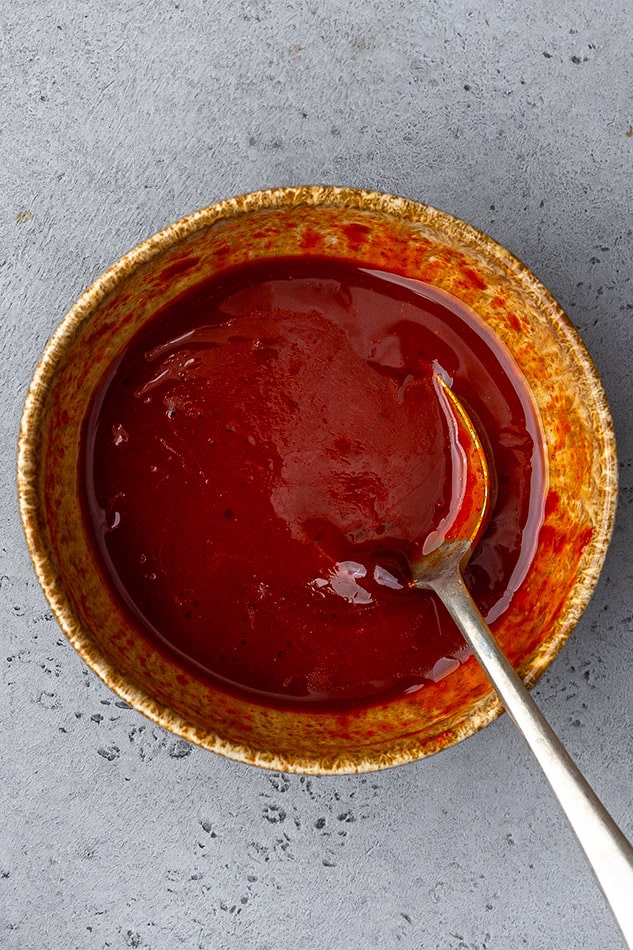
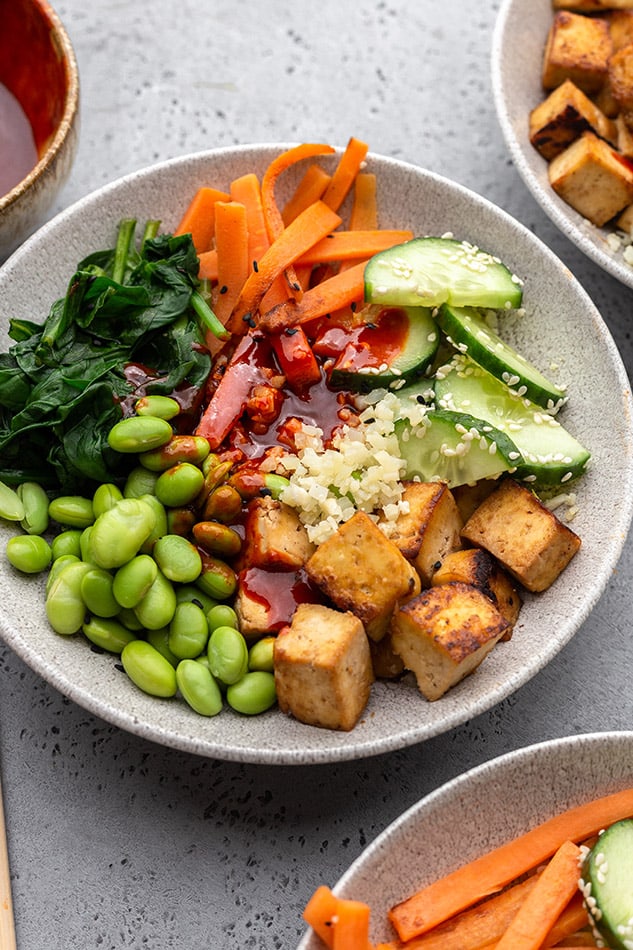

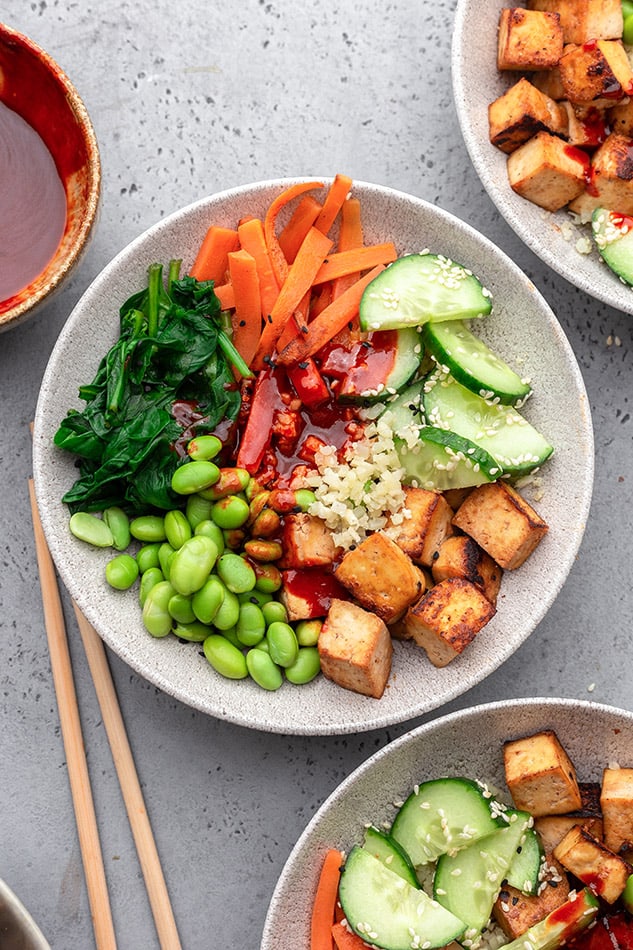
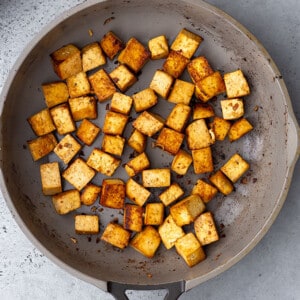
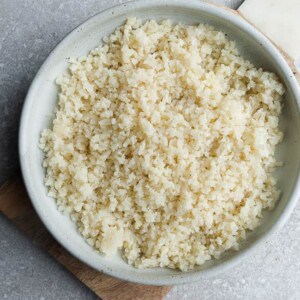
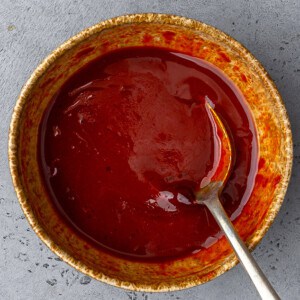
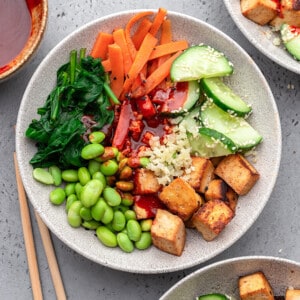
 Did you try this recipe?
Did you try this recipe?






Leave a Comment